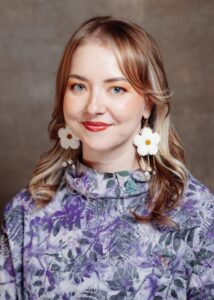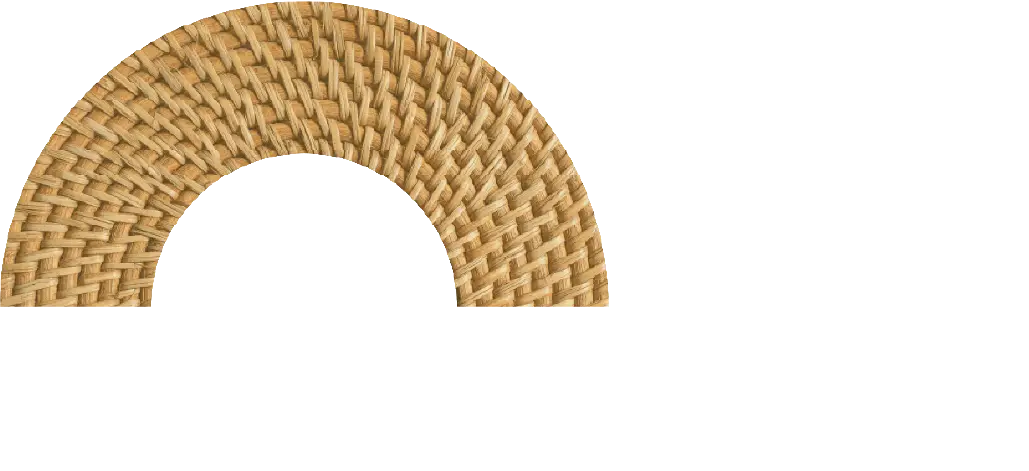
For Delaney Arnaq Naruyaq’ Thiele (Dena’ina Athabascan and Yup’ik), identity has always lived in the space in between. Self-described as “white passing,” but deeply rooted in her family’s Alaska Native history, culture and traditions, Delaney grew up navigating urban Anchorage schools while holding tight to stories of subsistence and survival. That duality now fuels her work with the ANCSA Regional Association (ARA), where she helps bridge divides among Alaska Native peoples, Lower 48 Tribes and policymakers shaping the future of Tribal sovereignty and Native self-determination.
The Raven’s Circle sat down with Delaney to discuss her path, her passion for policy, and the lessons she carries with her from family and community.
What is your personal and family background, and what is your connection with CIRI?
I was born and raised in Anchorage. My family is from Alexander Creek, just at the bottom of Sleeping Lady, and from the Bethel and Dillingham areas. I was gifted CIRI shares from my father, Georg Thiele, who is an original enrollee.
Did you feel a strong sense of Native identity growing up?
I always felt Native growing up, but it’s different living in an urban setting versus a rural setting. My grandfather, Reinhold Thiele, was a hunting guide and had fishing boats in Bristol Bay, and because of his strong cultural ties, I have always known I was Alaska Native. The stories my grandfather told have helped guide me throughout my life; he taught all his children and grandchildren how to live our Native values.
I often felt suspended between two worlds, or that I was existing in spaces that weren’t completely relevant to me. I attended Anchorage School District public schools, and I remember in elementary school being taken out of class for Indigenous education. But the program was so pan-Indigenous; I remember making dream catchers. Like, why were we making dream catchers? [laughs] I think there was limited Alaska Native educational content at the time, and it didn’t seem like a priority for the school district.
What inspired you to pursue a career focused on Alaska Native issues and policy?
I participated in Model United Nations in high school, which made me want to continue studying human rights and policy. I graduated from high school in 2011 and began attending the University of Alaska Anchorage (UAA) as a political science major where I took a Tribes, Nations and Peoples class. The instructor was Dalee Dorough, the former international chair of the Inuit Circumpolar Council. It was the most inspirational and moving class I had ever taken. I also had classes with Kimberly Pace, another professor who was incredibly influential to me, and who served as the faculty director of Model United Nations of Alaska at UAA. These two put me on the path of Native advocacy and inspired me to learn more about Native rights and sovereignty and self-determination.
I graduated from college in May 2020, during the height of the COVID-19 pandemic. The year before I graduated, thanks to Dalee Dorough and Kimberly Pace, I was invited to do a United Nations Permanent Forum on Indigenous Issues internship in New York. Then, through a competitive selection process, I was invited to serve in the 14th cohort of Fellows in the First Alaskans Institute Public Policy Fellowship, which is based in Juneau.
I had never been to Southeast Alaska, and I was so anxious about it. But I ended up meeting some great young Alaska Natives in my cohort. I also connected with First Alaskans Institute’s former Alaska Native policy director, Barbara Blake, who later became a mentor to me. I have been so fortunate to learn from strong Alaska Native leaders, especially Alaska Native women, who have become mentors to me.
How did you come to work for the ANCSA Regional Association?
In 2021 I met my partner, who is Navajo, and had the opportunity to move to New Mexico. I wanted to see what Tribal relations were like outside Alaska, so I applied for and began working for a New Mexico-based Tribal coalition, specializing in domestic and sexual violence advocacy. I was the organization’s gender-based violence training coordinator for two years. I learned a lot about Tribal relations in the Lower 48, and it solidified my desire to want to learn more about and dedicate my time to building Tribal relations in my own Alaska Native community.
My good friend Marya Halvorsen, who serves as the government and regional affairs manager for Koniag (the Alaska Native regional corporation for Kodiak Island), urged me to explore job opportunities in Alaska, where my policy skills are relevant. This led me to begin working as ARA’s projects and policy specialist in September 2024.
What are some of your areas of focus and policy work with ARA?
ARA represents the 12 land-based Alaska Native regional corporations. We have our board members, who are the presidents and/or CEOs of each of the 12 corporations, and then we have committees that support ARA’s policy work. A lot of the work ARA has been doing recently is building and strengthening Tribal relations with our Lower 48 relatives.
There’s a lot of confusion around how Alaska’s unique model of self-determination works. I feel there’s a huge opportunity to showcase what Alaska has done over the 50 years since the passage of ANCSA, and how we can continue to best serve our Alaska Native people. Our leaders achieved a significant milestone by passing ANCSA, and ARA is dedicated to enhancing this legislation to best benefit our community now and in the future. Our board sets the path for ARA, and I’m honored to serve in this role of support.
What are some of your hobbies and pursuits outside of work?
I have been beading since I was a kid; my aunties are all big crafters. When I was in college, I took an Alaska Native beading class, and it really strengthened that connection with my childhood.
I started my beading business, Cloudberry, in 2018. Cloudberry taught me so much as to why it’s important to continue advocating for our traditional activities. I’m on a little bit of hiatus right now; I always joke that I’m semi-retired. But when life gets less busy, I hope to start beading again.
What would be your advice to young Alaska Native people looking to strengthen their connection with culture and heritage?
The first thing I would say to a young person is that you are valid in your Nativeness—no matter how you look, how you express yourself, where you grew up. I think it’s important to uplift our young Native voices by listening to their perspectives and experiences.
My brother, Rutger, is a pilot for Alaska Airlines. Even though he is not involved in advocacy in the ways I am, he tells me he feels the most connected when he can do things for our family, like filling our freezers with fish. Everyone has their own way of connecting with their culture and communities; people shouldn’t feel like they aren’t enough if they don’t fi t into a particular box someone else created for them.
The CIRI Foundation and Cook Inlet Tribal Council helped pay for my education, and that support is the reason I don’t have debt post-university. I think in this era, many Alaska Natives, especially those outside our villages, identify first with their Native corporation. Even when I wasn’t as involved as I am now, I always knew I was a CIRI Descendant. I’d like to think Alaska Native corporations are on the path of balancing corporate and culture and how to weave the two together. I wouldn’t be where I am without CIRI.


